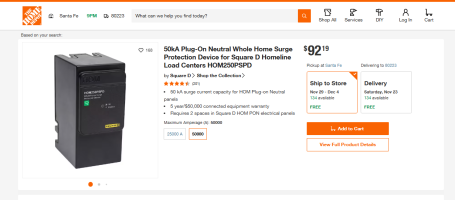jar546
CBO
Omaha City Council Stalemate Highlights Tensions Over Building Code Updates
Building codes are once again at the center of a heated debate in Omaha, Nebraska. Disagreements between the City Council and Mayor Jean Stothert on stricter building standards came to a head after the mayor vetoed proposed updates to the city’s electrical code. The veto sparked controversy over balancing safety, affordability, and practicality in building regulations.The Veto and Its Aftermath
Last week, Mayor Stothert vetoed the City Council’s plan to adopt stricter electrical code requirements, arguing that the proposed changes were unnecessary and would inflate construction costs. One contentious element was the proposed mandate for whole-house surge protectors, which the mayor and others deemed an undue burden on affordable housing development.On Tuesday, the council failed to secure enough votes to override the veto. Despite the setback, some council members remain optimistic about improving the proposals.
“We’re working hard to move forward with affordable housing ideas,” Councilman Don Rowe said. “I still believe these carve-outs were appropriate.”
Diverging Perspectives
The debate over stricter codes pits safety advocates against concerns over housing affordability. Supporters of the stricter standards argue that safety should be paramount, regardless of cost. Conversely, critics, including members of the homebuilding industry, worry that the added requirements would exacerbate Omaha’s affordable housing crisis.“If it’s not required in existing homes, why would we require it in new construction?” questioned one industry representative, pointing out that Nebraska’s newly adopted state electrical code doesn’t mandate whole-house surge protectors.
The Bigger Picture
While the electrical code update remains unresolved, the council took a step forward on another housing initiative during the same meeting. They approved a plan to build 56 affordable housing units downtown, with rents expected to range from $700 to $900 per month. The development is part of a broader effort to address Omaha’s pressing need for affordable housing, with estimates suggesting the city requires an additional 30,000 units.In the wake of the veto, the City Council still has 60 days to revisit and update Omaha’s electrical code to align with Nebraska’s legislative updates passed in the spring. These amendments, made under LB-716, maintain safety standards without imposing additional costs for single-family homes, according to the mayor’s office.
Striking a Balance
Omaha’s debate underscores a common challenge in building code updates: how to balance public safety with housing affordability. While the veto may temporarily delay the stricter requirements, the conversation highlights the need for careful consideration of how regulatory changes impact builders, homeowners, and the community at large.As the City Council navigates these complex issues, all eyes will remain on Omaha to see how it addresses the dual pressures of safety and affordability in its building codes.

